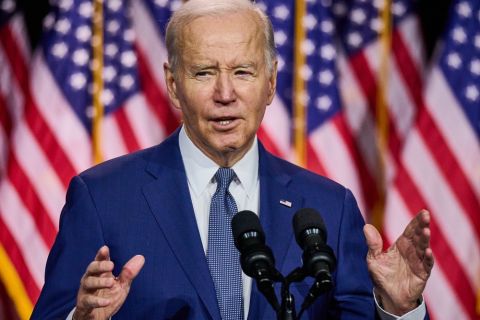Oil prices were steady on April 24 as concern over rising interest rates, the global economy and the outlook for fuel demand were balanced by the prospect of tightening supplies.
Brent crude slipped 22 cents, or 0.3%, to $81.44/bbl by 0905 GMT. U.S. West Texas Intermediate crude was down 10 cents, or 0.1%, at $77.77.
Both contracts fell more than 5% last week for their first weekly declines in five as U.S. implied gasoline demand fell from a year earlier.
Weak U.S. economic data and worse than expected corporate earnings from the technology sector sparked growth concerns among investors, CMC Markets analyst Tina Teng said. The stabilising U.S. dollar and climbing bond yields are also adding pressure on commodity markets, she added.
Central banks from the United States to Britain and Europe are all expected to raise interest rates when they meet in the first week of May, seeking to tackle stubbornly high inflation.
China's bumpy economic recovery after the COVID-19 pandemic is also clouding the oil demand outlook, though Chinese customs data showed on Friday that the world's top crude importer brought in record volumes in March. China's imports from leading suppliers Russia and Saudi Arabia topped 2 million barrels per day (bbl/d) each.
Refining margins in Asia, meanwhile, have weakened on record production from top refiners China and India, curbing the region's appetite for Middle East supplies loading in June.
Yet analysts and traders remained bullish about China's fuel demand recovery towards the second half of 2023 and potential supply tightness owing to additional supply cuts planned by the OPEC+ producer group from May.
"Planned output cuts by the OPEC+ alliance and a strong demand outlook from China could provide a fillip to prices in the coming days", said independent oil analyst Sugandha Sachdeva.
"Brent is likely to find key support around $79 a barrel, while for WTI crude support is aligned at $75," she said.
Recommended Reading
Ozark Gas Transmission’s Pipeline Supply Access Project in Service
2024-04-18 - Black Bear Transmission’s subsidiary Ozark Gas Transmission placed its supply access project in service on April 8, providing increased gas supply reliability for Ozark shippers.
EQT CEO: Biden's LNG Pause Mirrors Midstream ‘Playbook’ of Delay, Doubt
2024-02-06 - At a Congressional hearing, EQT CEO Toby Rice blasted the Biden administration and said the same tactics used to stifle pipeline construction—by introducing delays and uncertainty—appear to be behind President Joe Biden’s pause on LNG terminal permitting.
Venture Global Acquires Nine LNG-powered Vessels
2024-03-18 - Venture Global plans to deliver the vessels, which are currently under construction in South Korea, starting later this year.
Imperial Oil Shuts Down Fuel Pipeline in Central Canada
2024-03-18 - Supplies on the Winnipeg regional line will be rerouted for three months.
Pembina Pipeline Enters Ethane-Supply Agreement, Slow Walks LNG Project
2024-02-26 - Canadian midstream company Pembina Pipeline also said it would hold off on new LNG terminal decision in a fourth quarter earnings call.





